Span 48 cm / 18.9 in
Weight 29 g / 1 oz
The original Ar 79 was an aerobatic two-seat trainer and touring aircraft from Germany. First flight took place in 1938 and all together 72 examples were built. While some Ar 79 went abroad for example to Hungary one is currently on display in a Berlin museum. The Ar 79 had a retractable tailwheel undercarriage and was of mixed (material) construction. Although not many planes were produced the aeroplane was considered a success as some Ar 79 set records in their class. Powerplant was a 105 hp Hirth four-cylinder piston engine. Wingspan measured 10 m / 32 ft 10 in, length 7.6 m / 24 ft 11 in and endurance was more than five hours.
Note: You will find three versions of the Ar 79 in my plans lists: glider 1016, rubber powered (here) and RPU 3012.
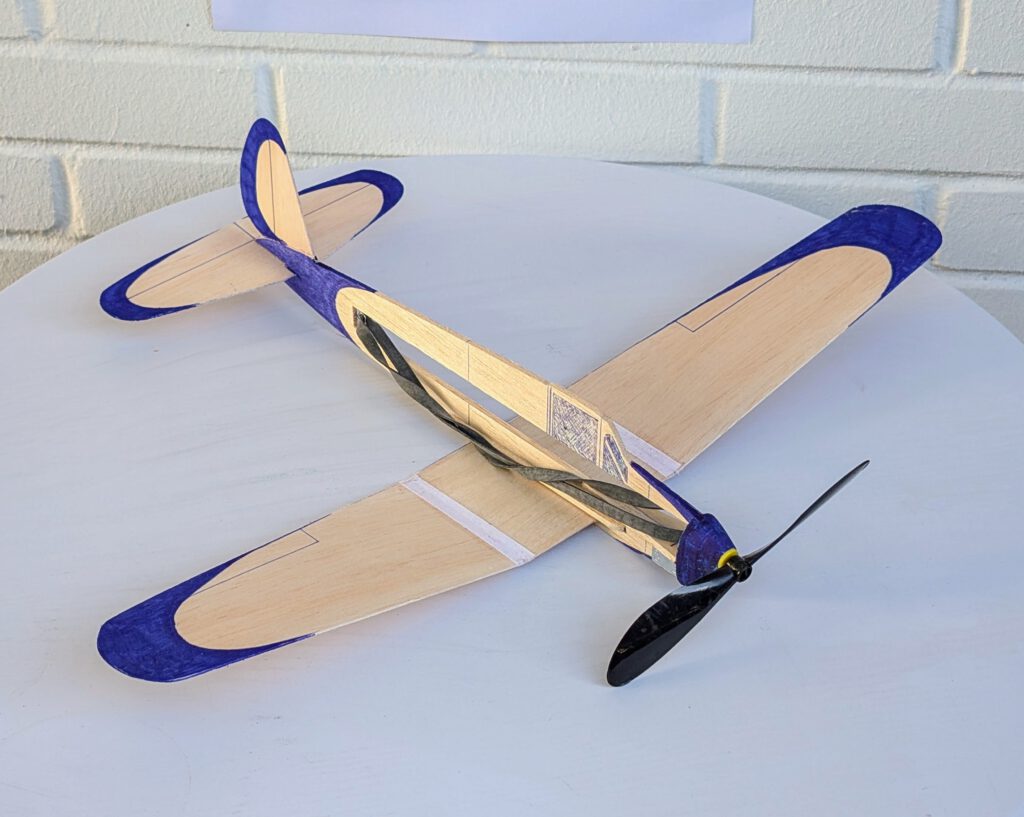
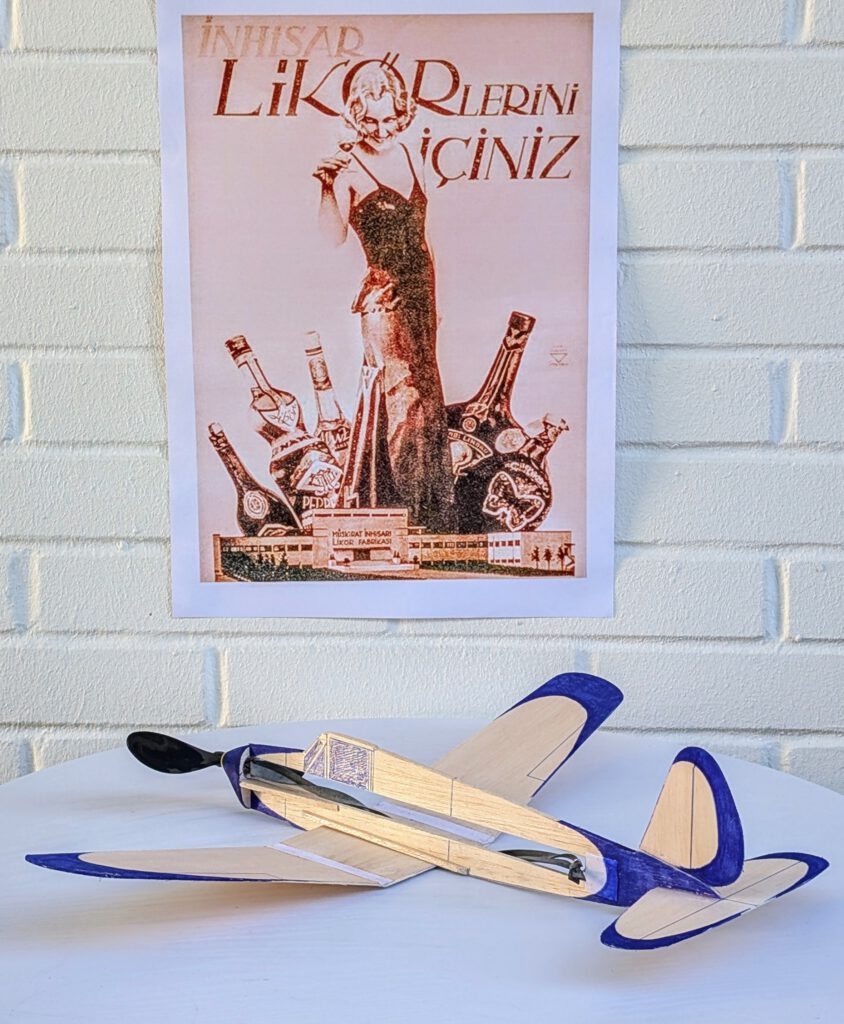

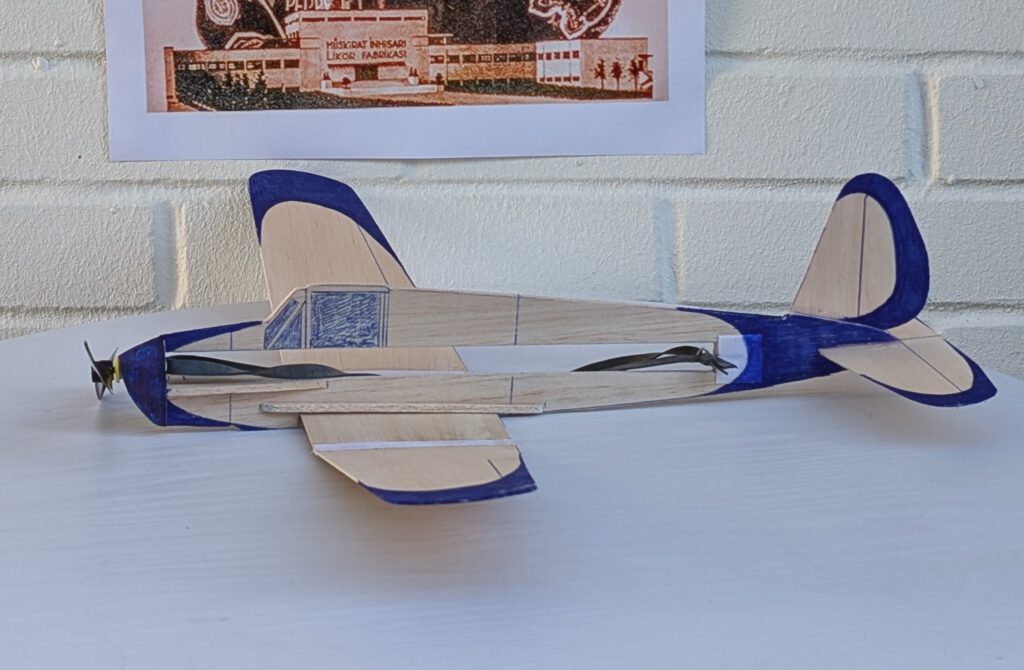
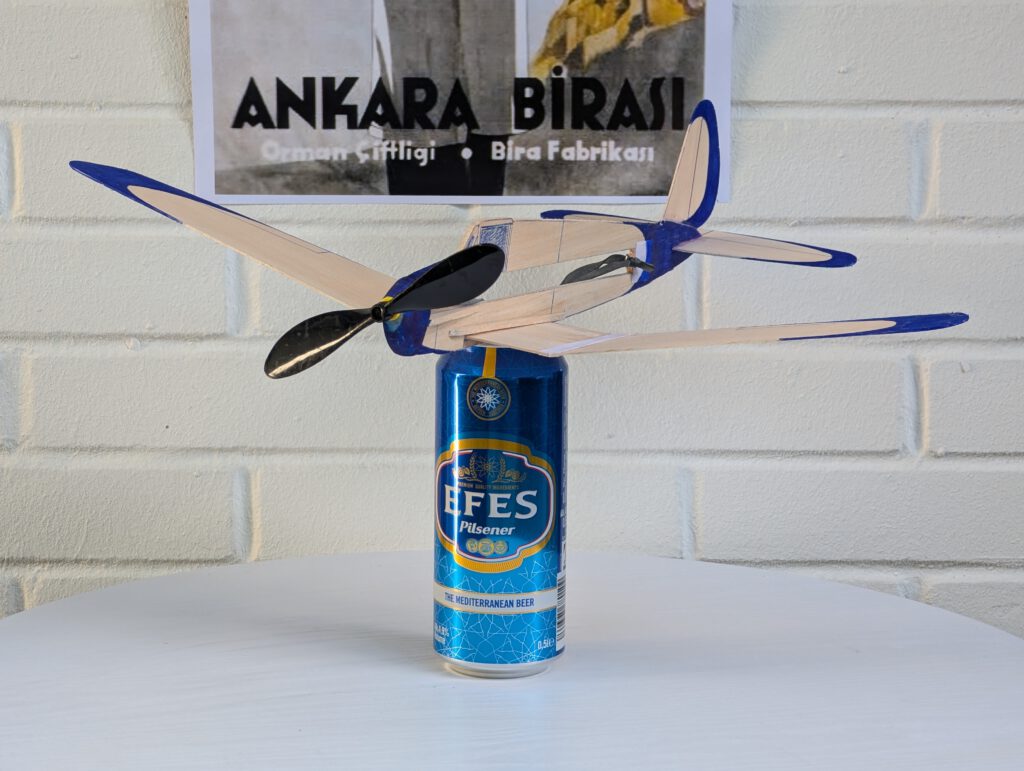




Building the rubber powered sheet balsa model Arado Ar 79.
Materials:
Fuselage: hard B 3; nose parts (round and triangle-shaped): 3 or 4 or 5 mm; wing supports: B strips 3 x 3; wings: hard B 1; horizontal stabilizer: B 1; fin: B 1; linen band width 10 mm / 1/3 in; ballast: 5 g / 1/5 oz steel or lead.
Assembly:
Cut out balsa parts in accordance to plan. Cut slots for wing and horizontal stabilizer into fuselage. Sand well. Transfer outlines of cabin windows, rudders, elevators, flaps etc. from paper to wood with pen. Colouring should be done preferably at this stage.
Wing:
Wing consists of one part. Center section remains flat but wing outer sections have to be lifted to obtain the necessary dihedral. Mark positions where wing outer sections have to be cut off from center section with pencil. Cut at this line slits using a knife or a saw. Fix wing center section on building board with needles and crack or break left wing outer sections on slit line upward. Underlay wing tip in accordance to required dihedral (plan). Fill slit amply with cement and cover slit area with linen band. Let dry. Repeat this procedure for the right wing half. Set aside and let dry.
Fuselage:
Cement fin on fuselage after having diligently checked symmetry. Make cutout for rubber. Install hook made of piano wire. Cover hook area with a piece of linen and amply use some extra glue on it. Let dry.
Cement wing support strip on left side into position and let dry. Turn fuselage around and repeat this procedure on right side. Let dry.
Cement horizontal stab into its position on rear fuselage using needles to hold. Visual check twice that symmetry is obtained. Let dry.
Final Assembly:
Slide wing into its slot. Cement wing to fuselage and to wing supports. Use needles to hold in place. Doublecheck visually symmetry. Put aside and let dry.
For balancing your model properly start test-gliding over tall grass. Add ballast according to your test results. Note given position of CG on plan.
Remember correct center of gravity (CG) is essential for successful flights.
Observations:
As the Arado is light-built it climbs fast. After rubber power is exhausted it glides back to ground gently yet determined.
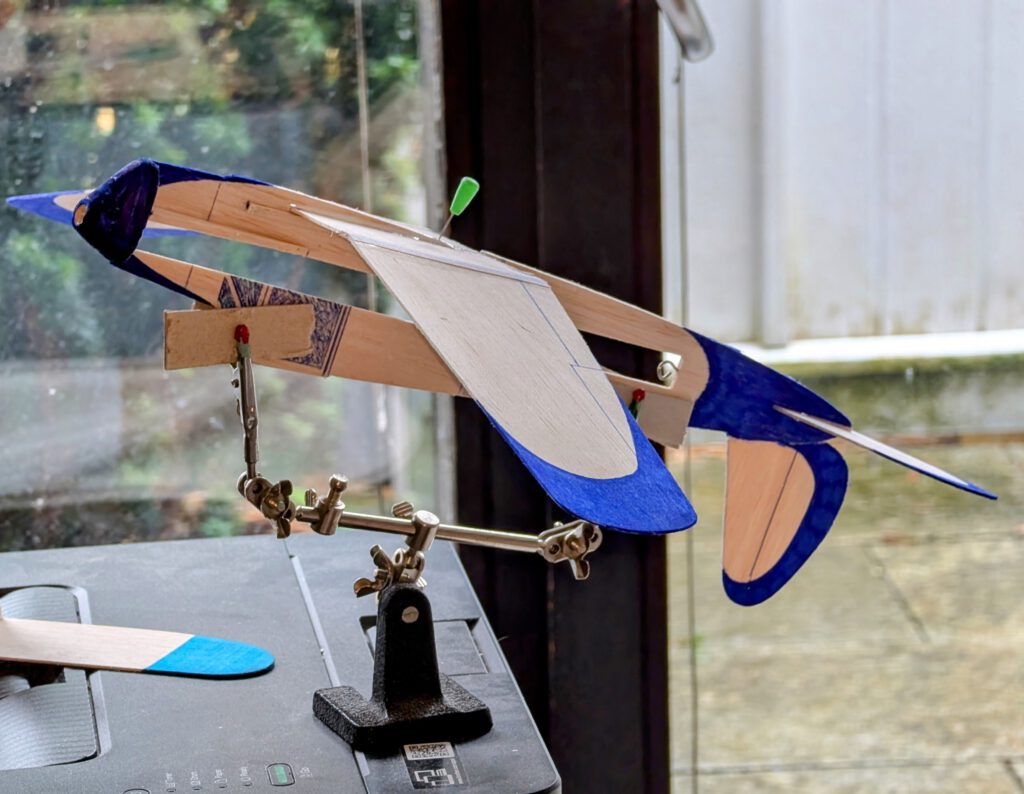

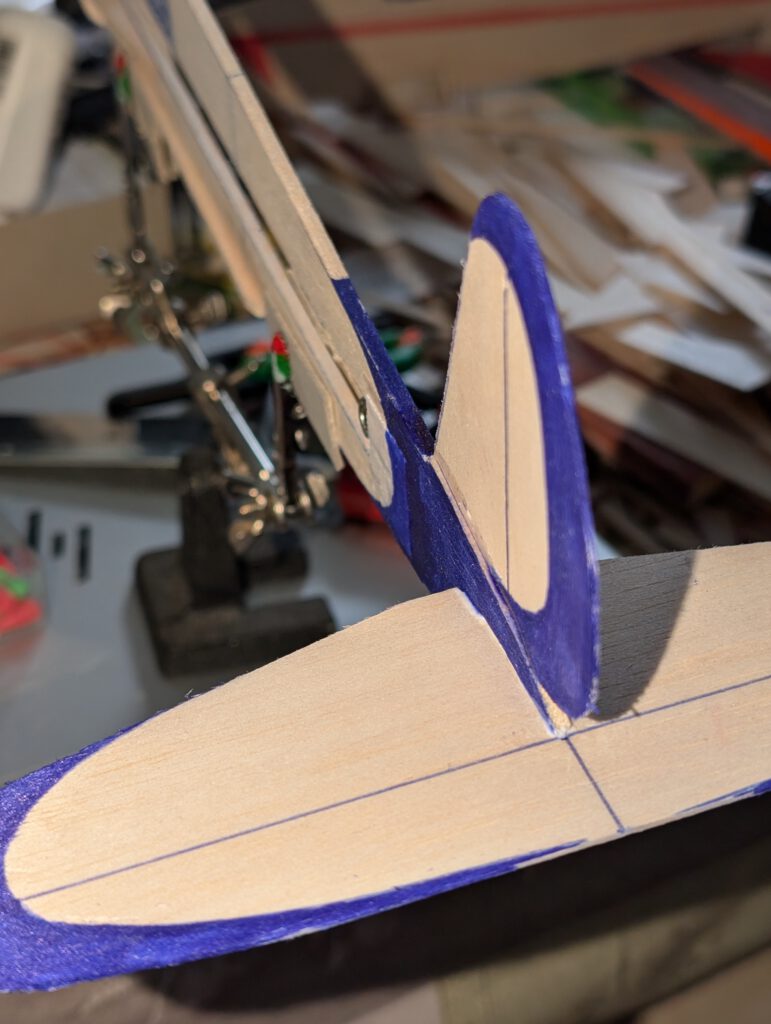



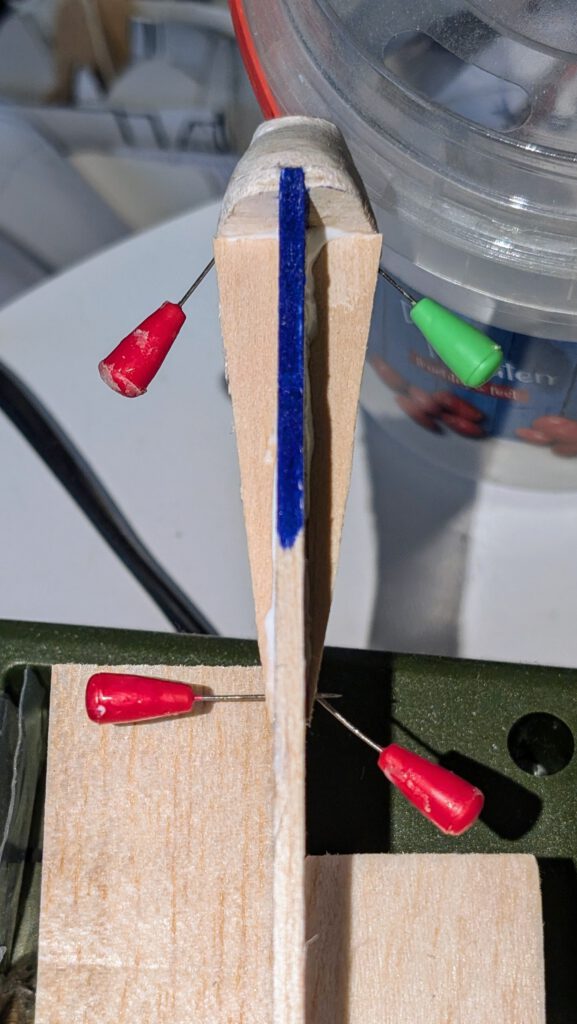

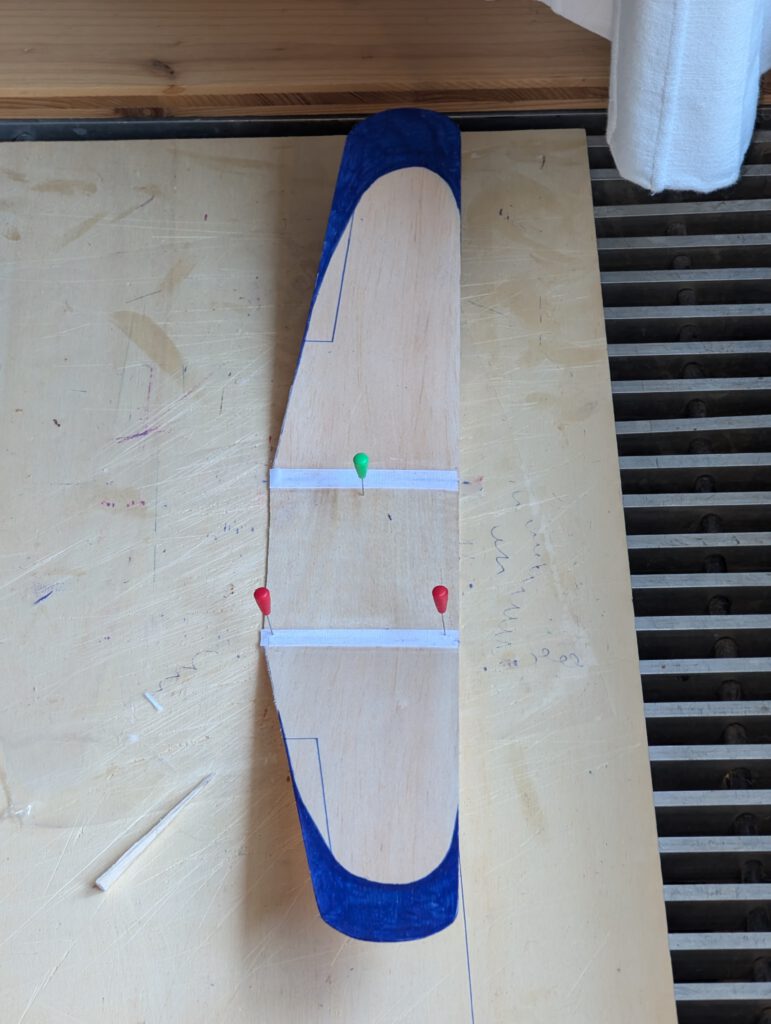
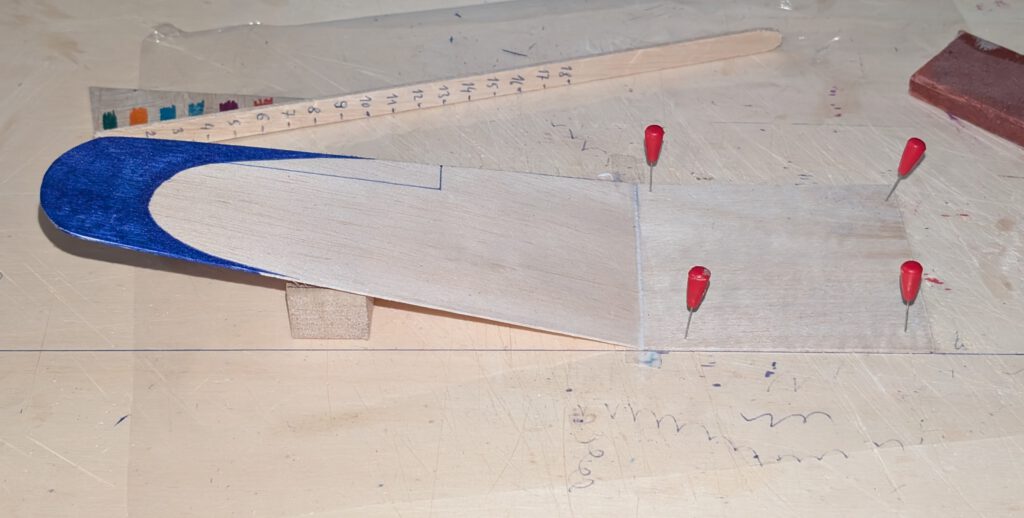
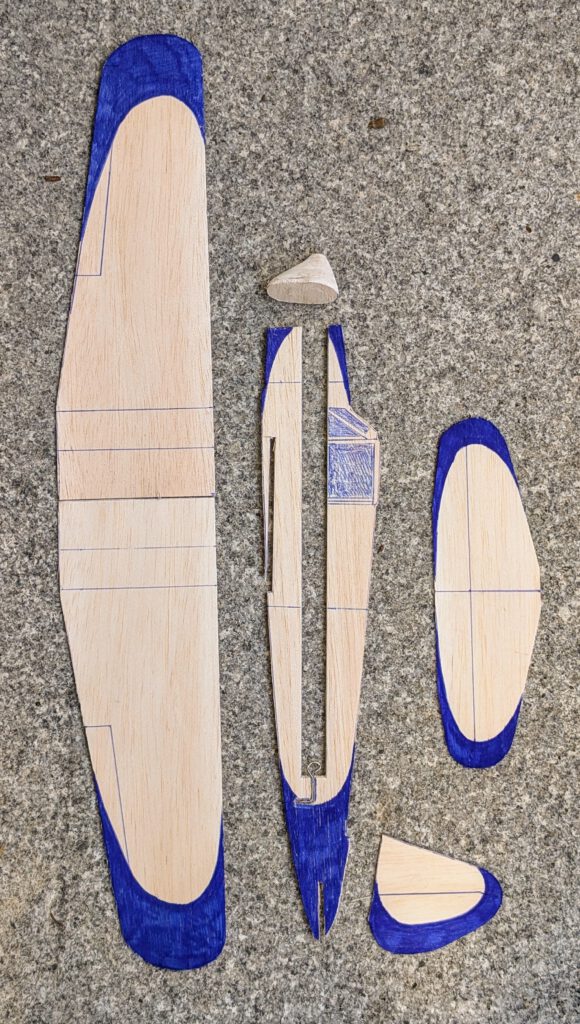
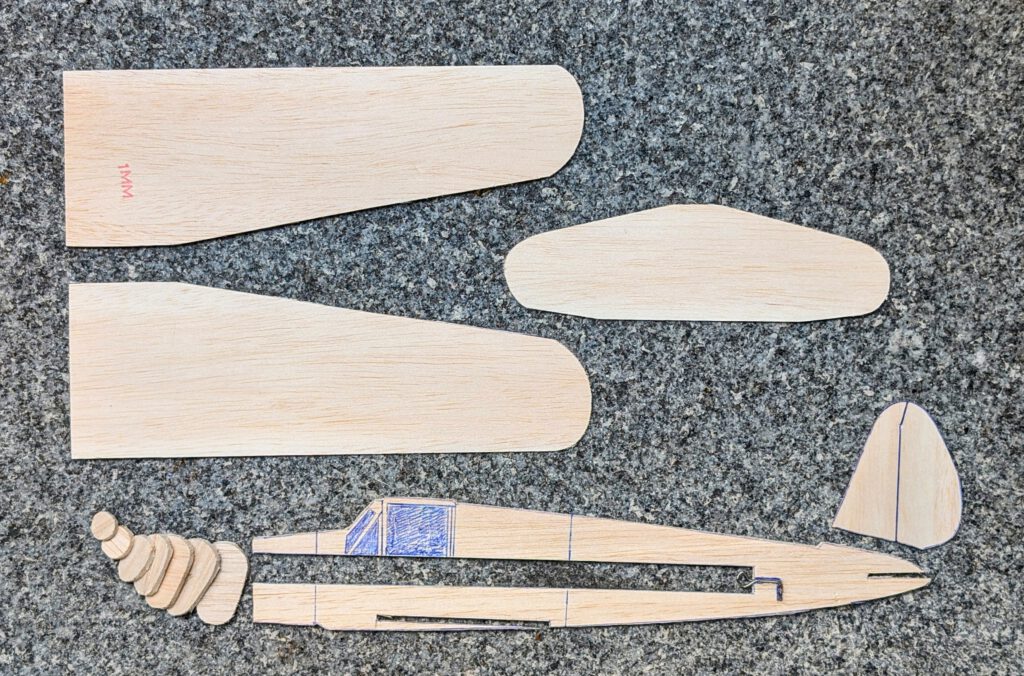
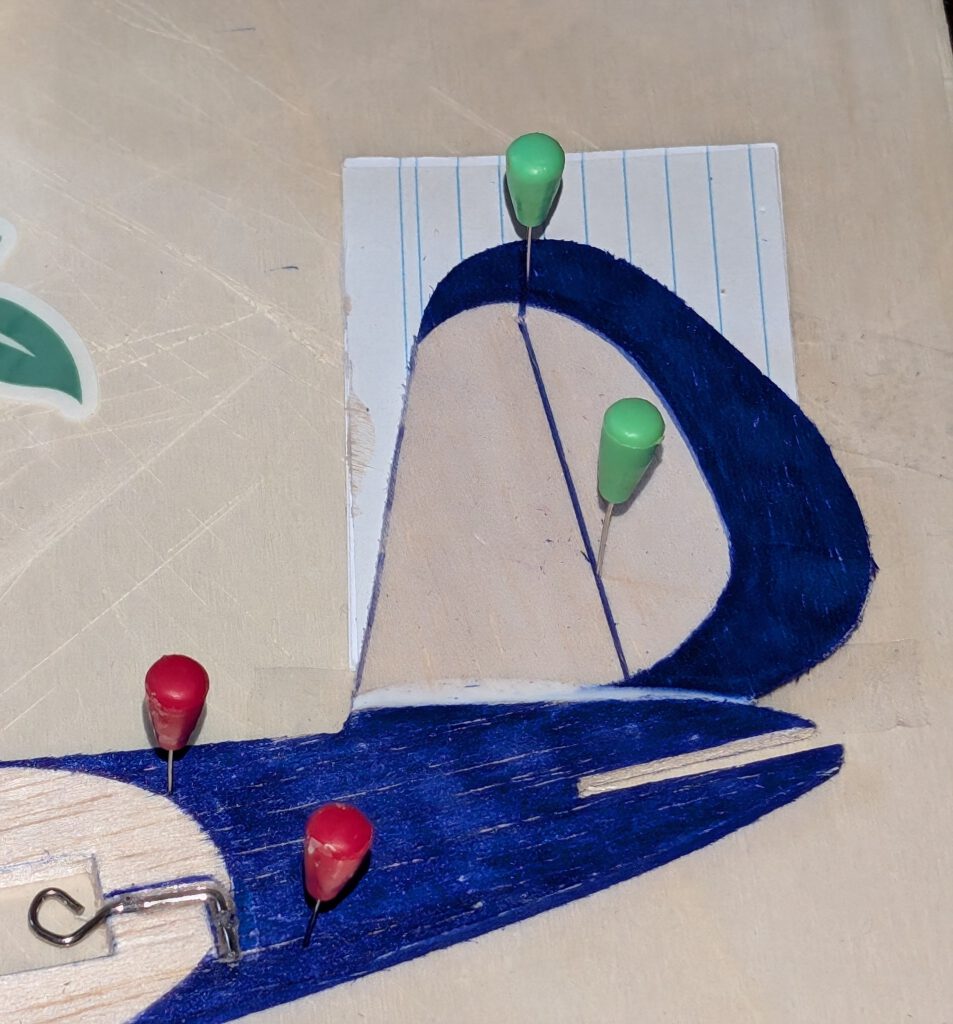
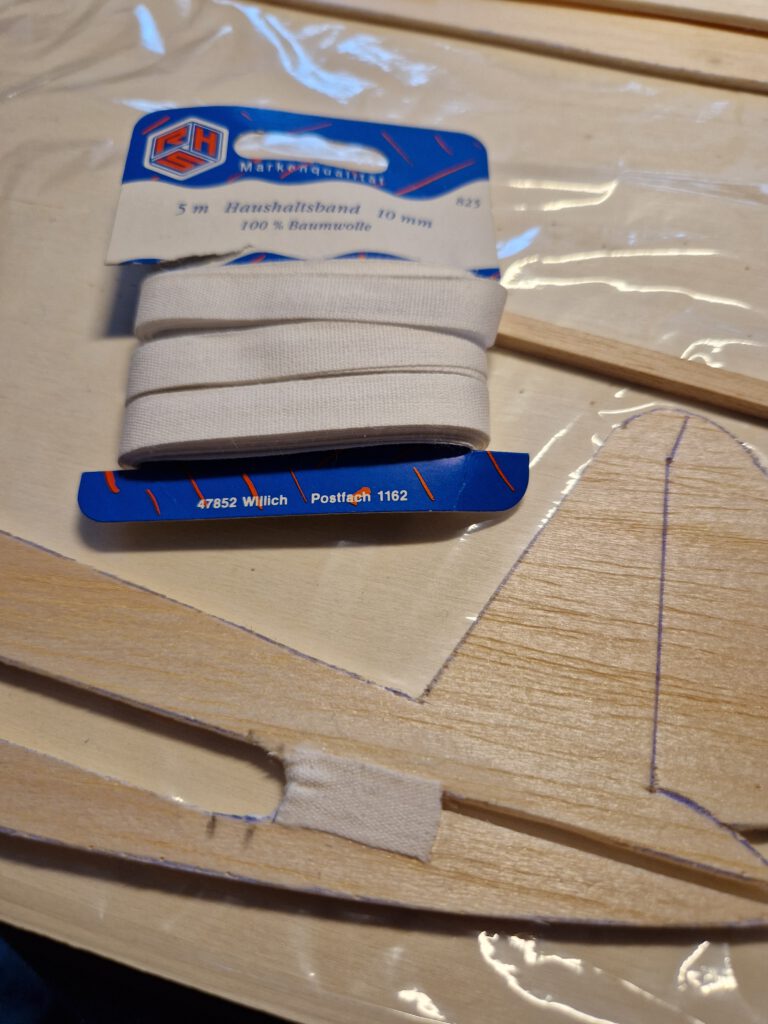
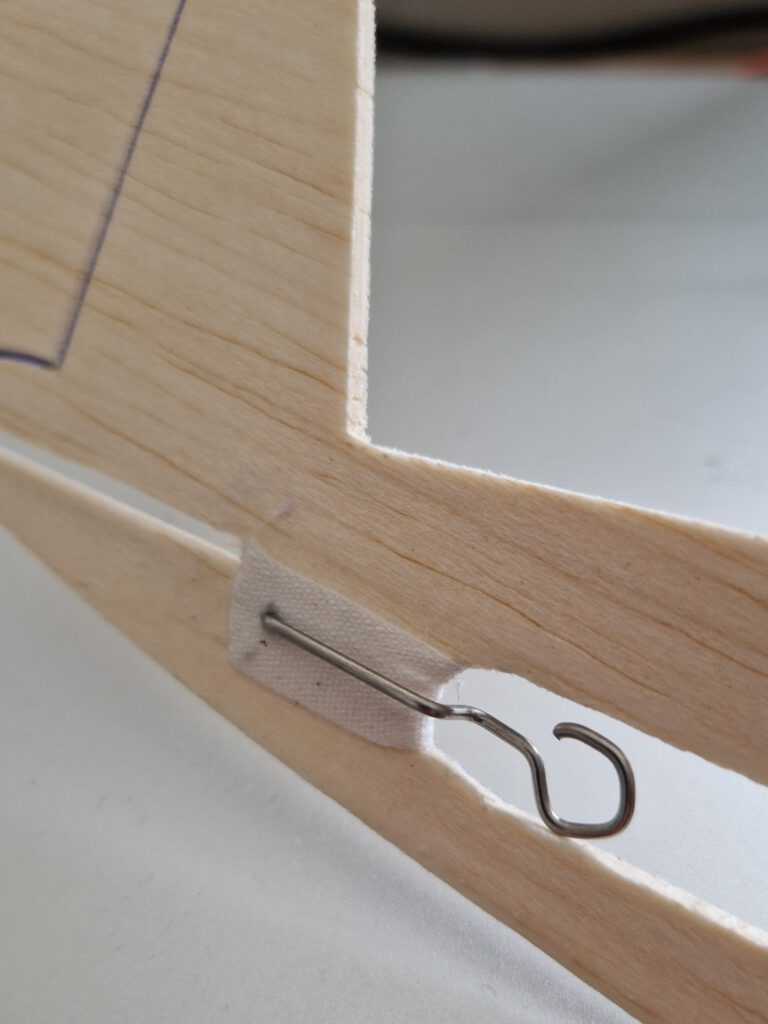
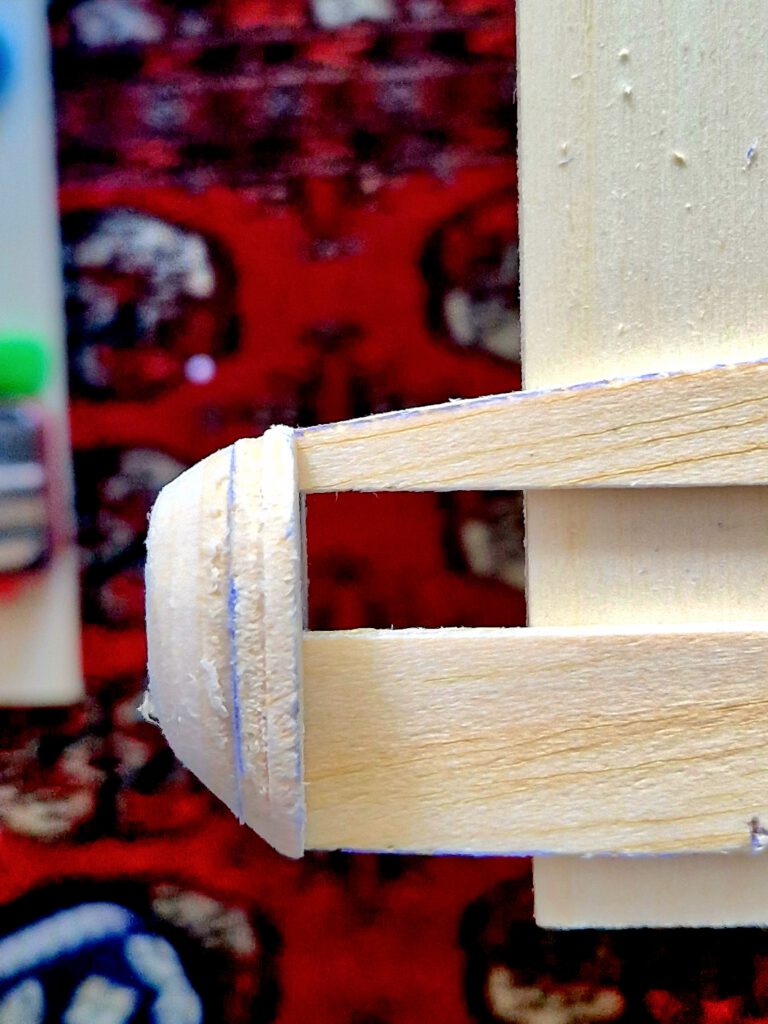
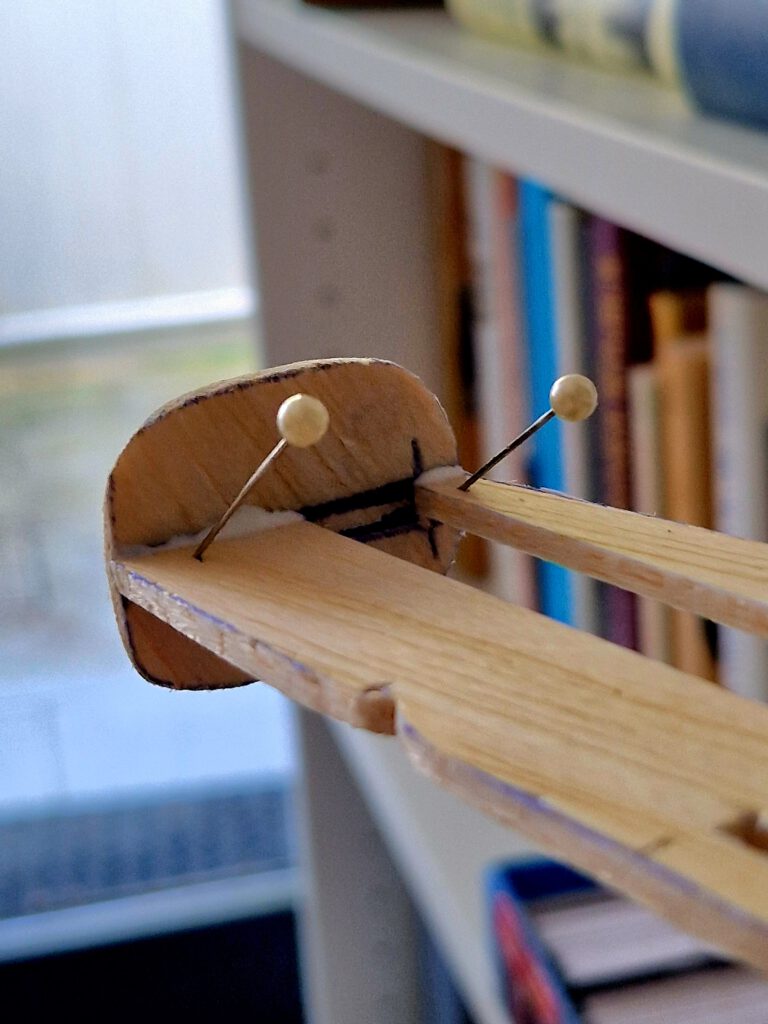
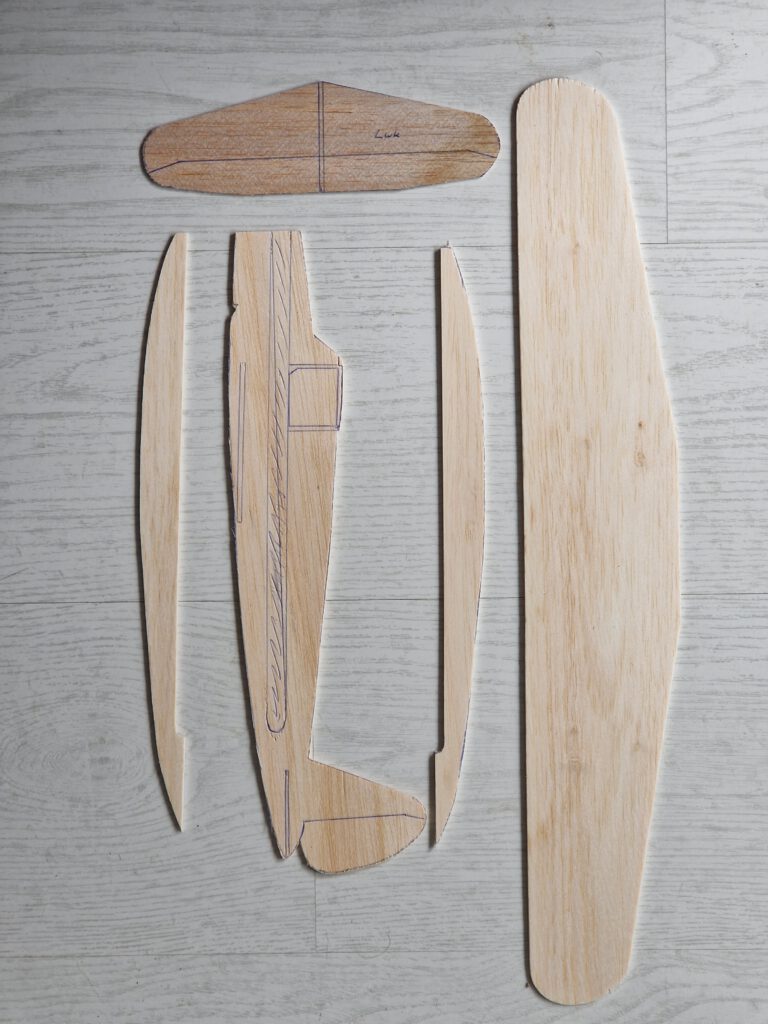
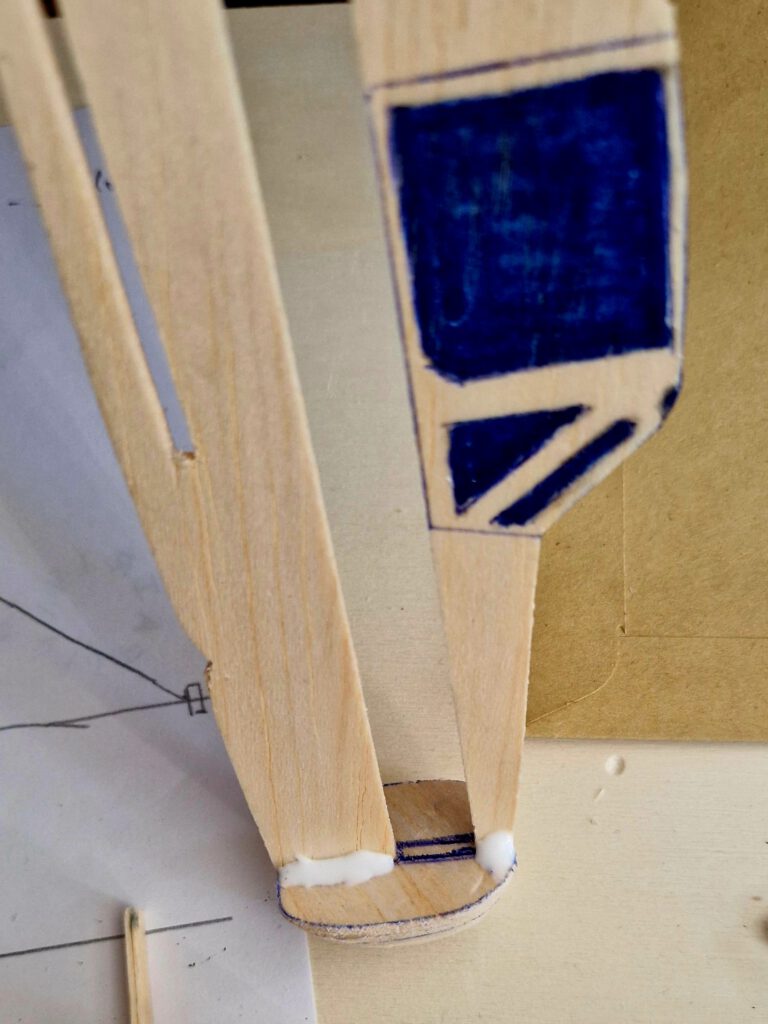
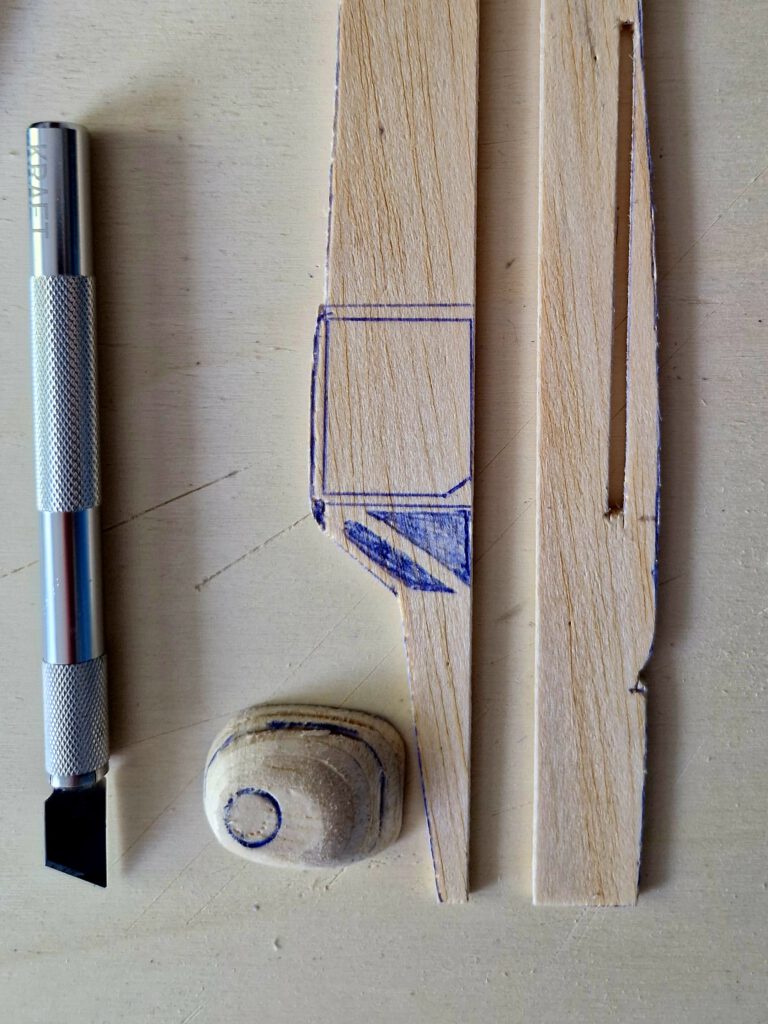
ڪيتريون ئي ڪامياب پروازون! (Size bol başarılı uçuşlar diliyorum!)

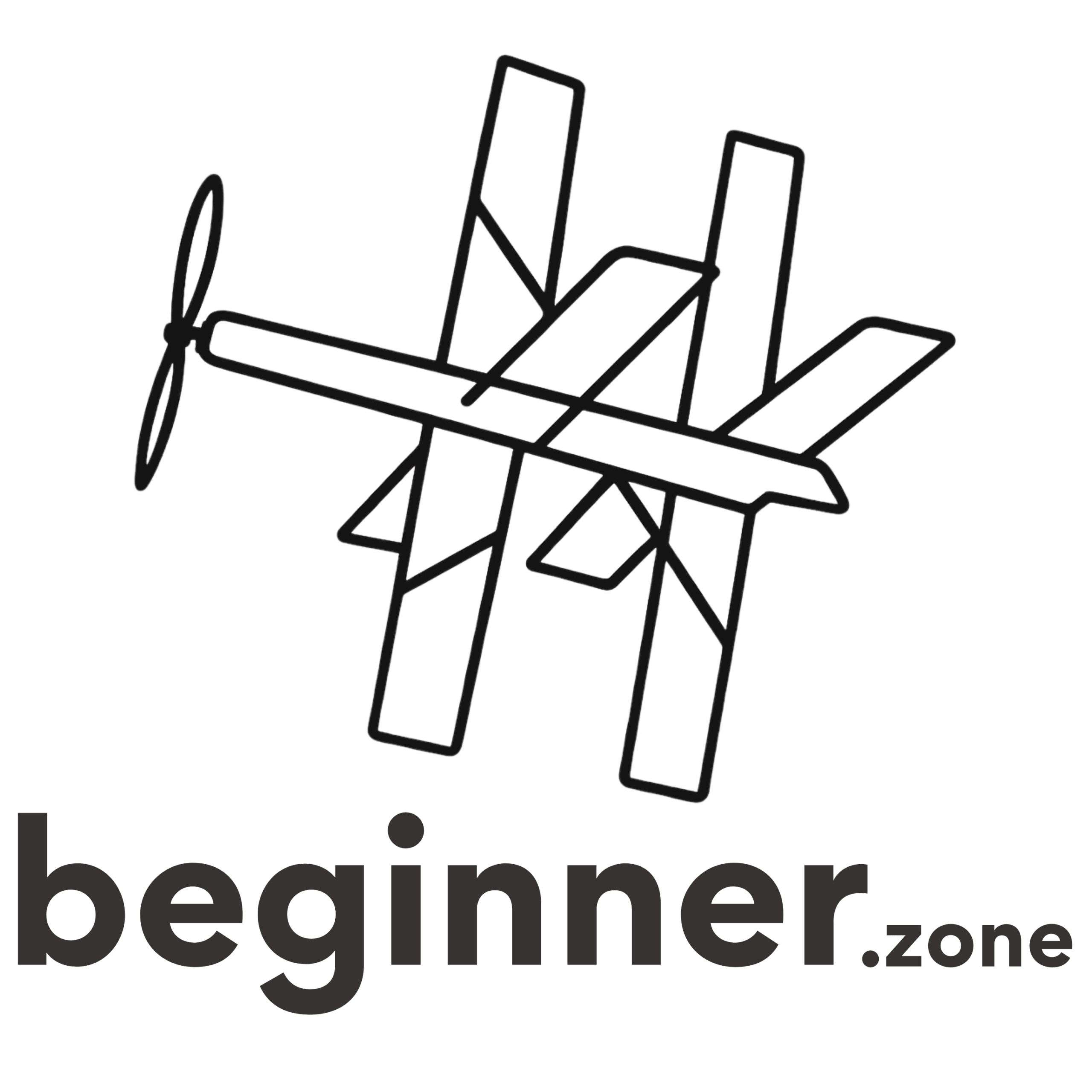
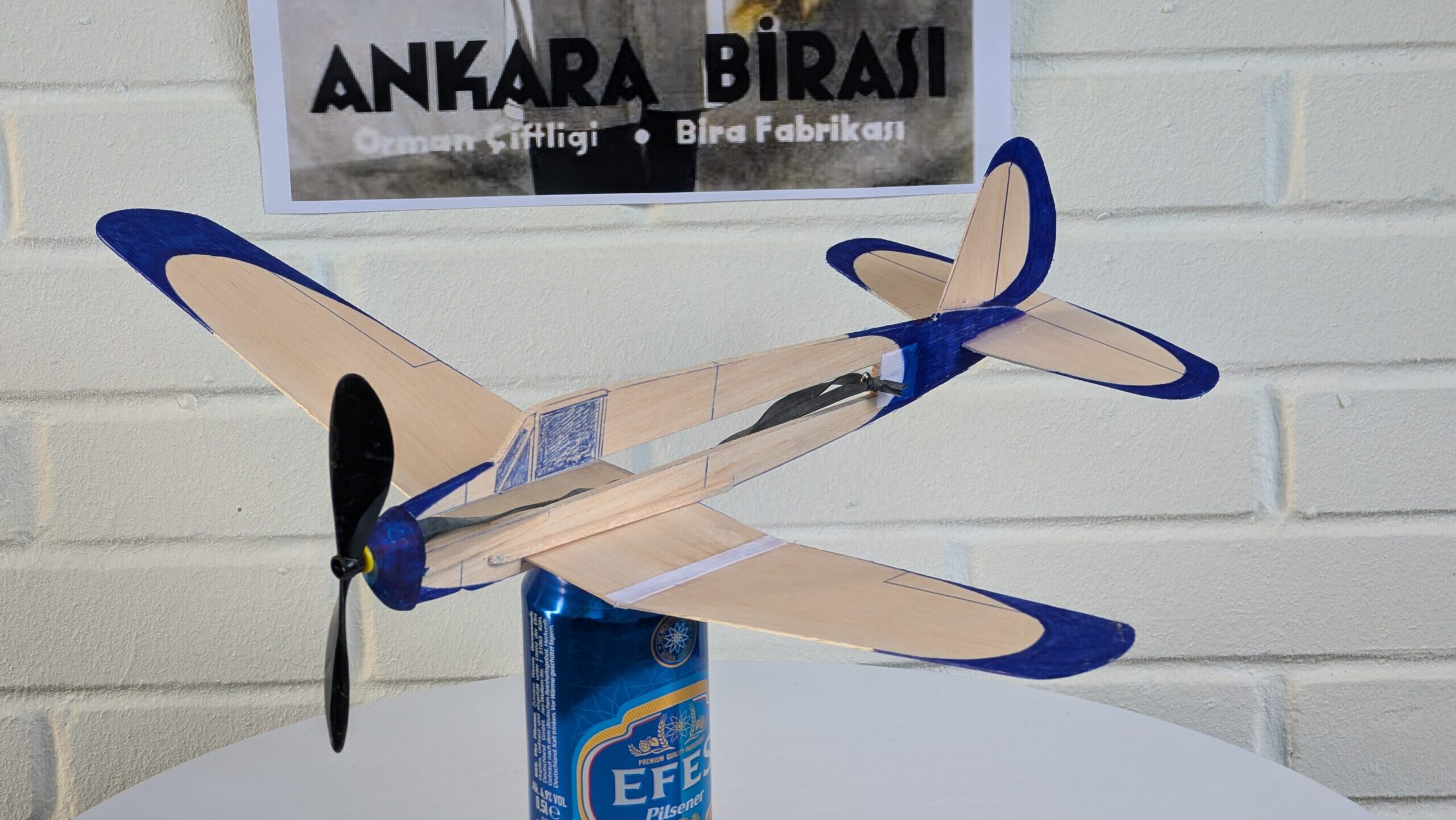
Leave a Reply